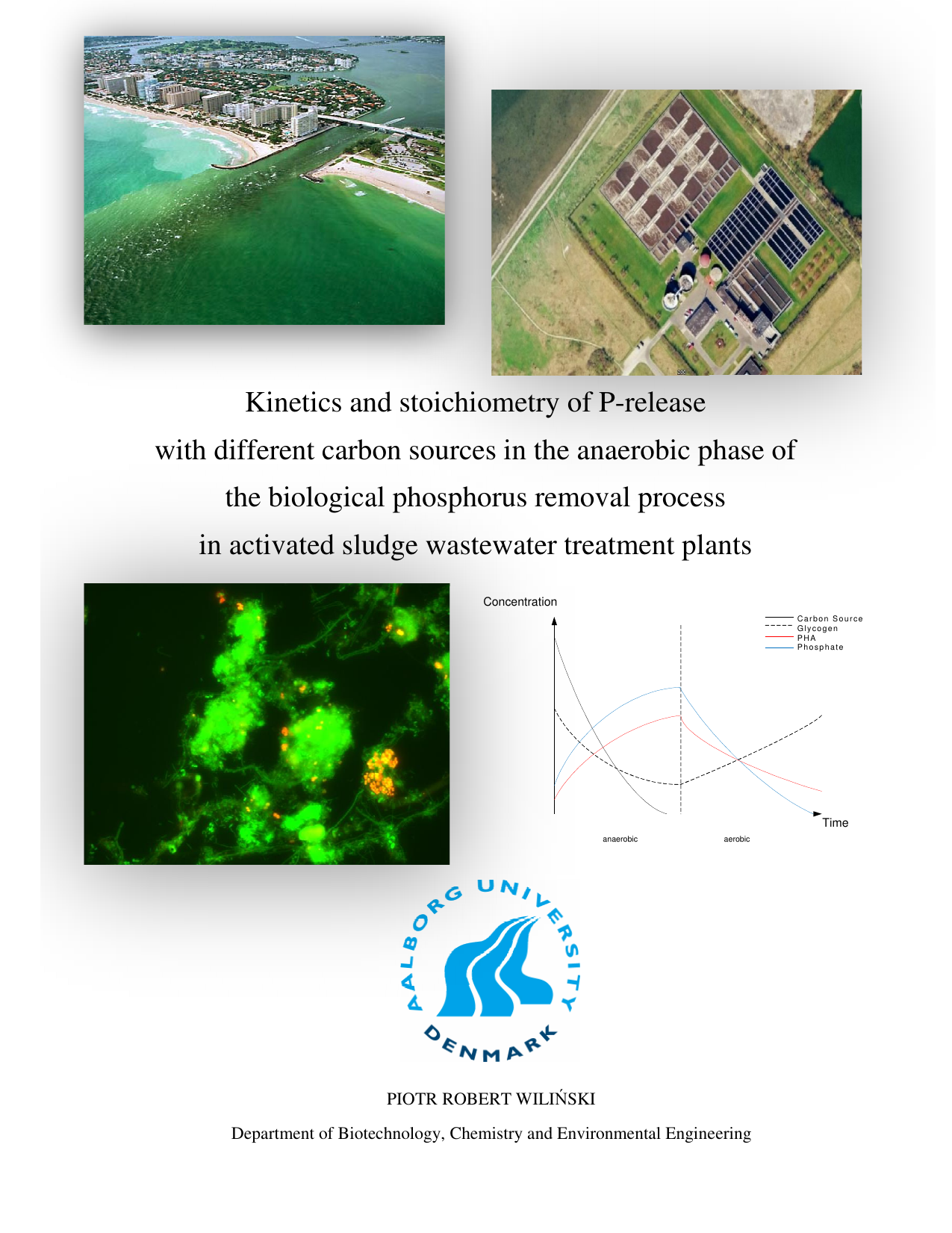
Kinetics and stoichiometry of P-release with different carbon sources in the anaerobic phase of the biological phosphorus removal process in activated sludge wastewater treatment plants
Translated title
Kinetics and stoichiometry of P-release with different carbon sources in the anaerobic phase of the biological phosphorus removal process in activated sludge wastewater treatment plants
Author
Term
10. term
Publication year
2009
Submitted on
2009-08-16
Pages
80
Abstract
The anaerobic part of the enhanced biological phosphorus removal process is important and must be conducted in proper extracellular conditions to obtain a well-working EBPR plant. One of them is the supply of a suitable carbon source for polyphosphate accumulating organisms (PAO). The purposes of the project were to analyze kinetic and stoichiometry of anaerobic P-release process with amino acids comparing to the VFAs as carbon source, to analyze the most suitable pH conditions for AAs uptake by bacteria and to compare the bacterial community structure and its influence on the P-release process. Activated sludge from three Danish wastewater treatment plants: Aalborg West, Hjørring and Bjerringbro, was used to conduct laboratory tests on P-release. The batch experiments conducted in the project led to the observation that amino acids can be regarded as a carbon source for the anaerobic phase of the EBPR process, however, not all of them. Among 20 amino acids glycine had the highest influence on the process. Lab tests showed that pH conditions 7-8 were the most suitable for anaerobic P-release with usage of AAs as carbon source. Besides that, it was observed high variety in the process due to microbial population structure and the period of the year.
Keywords
Documents
